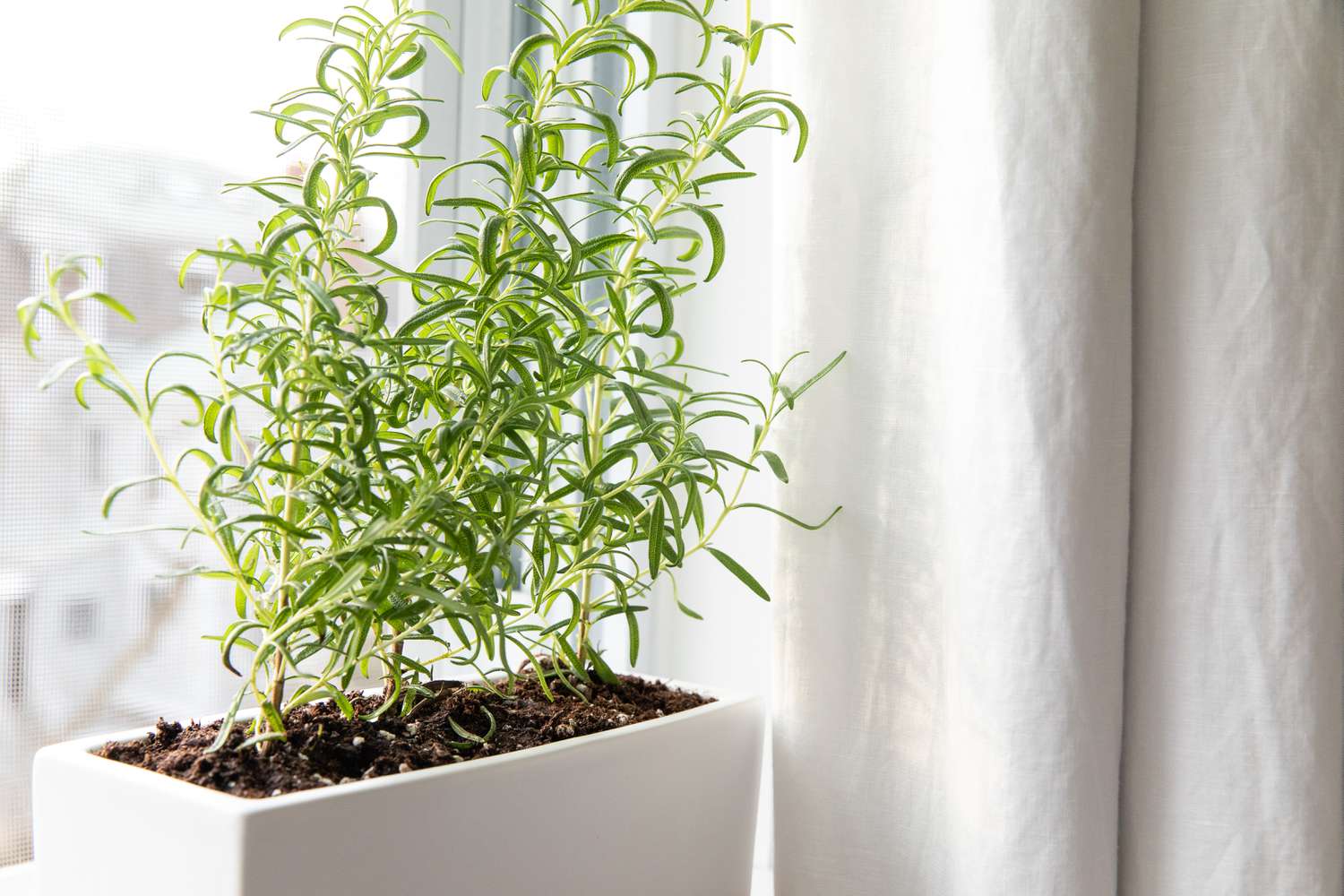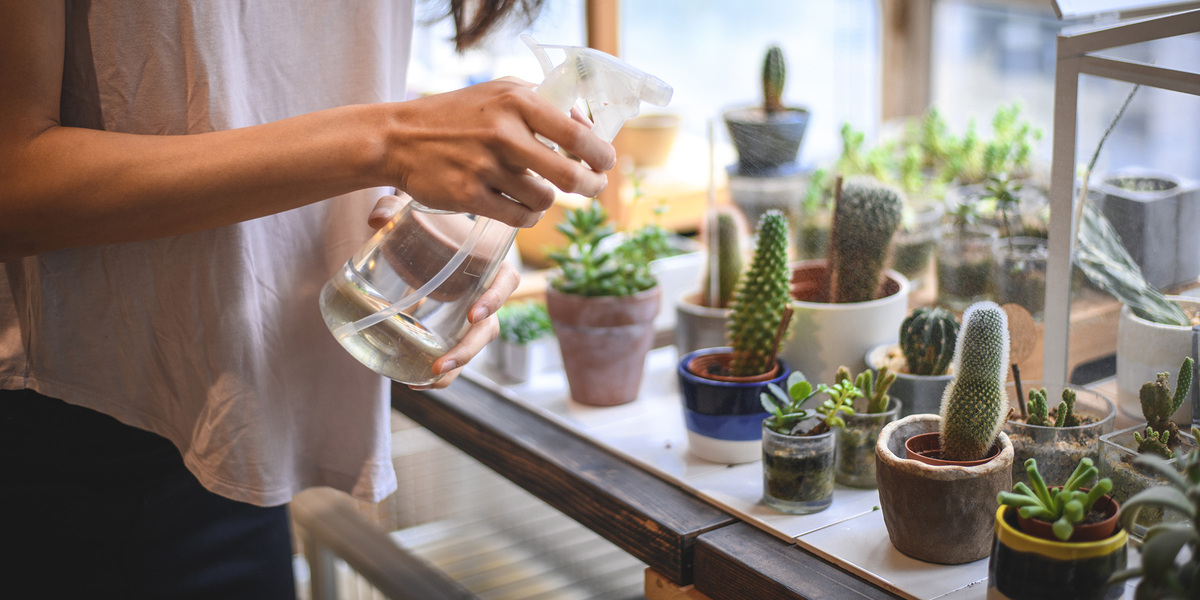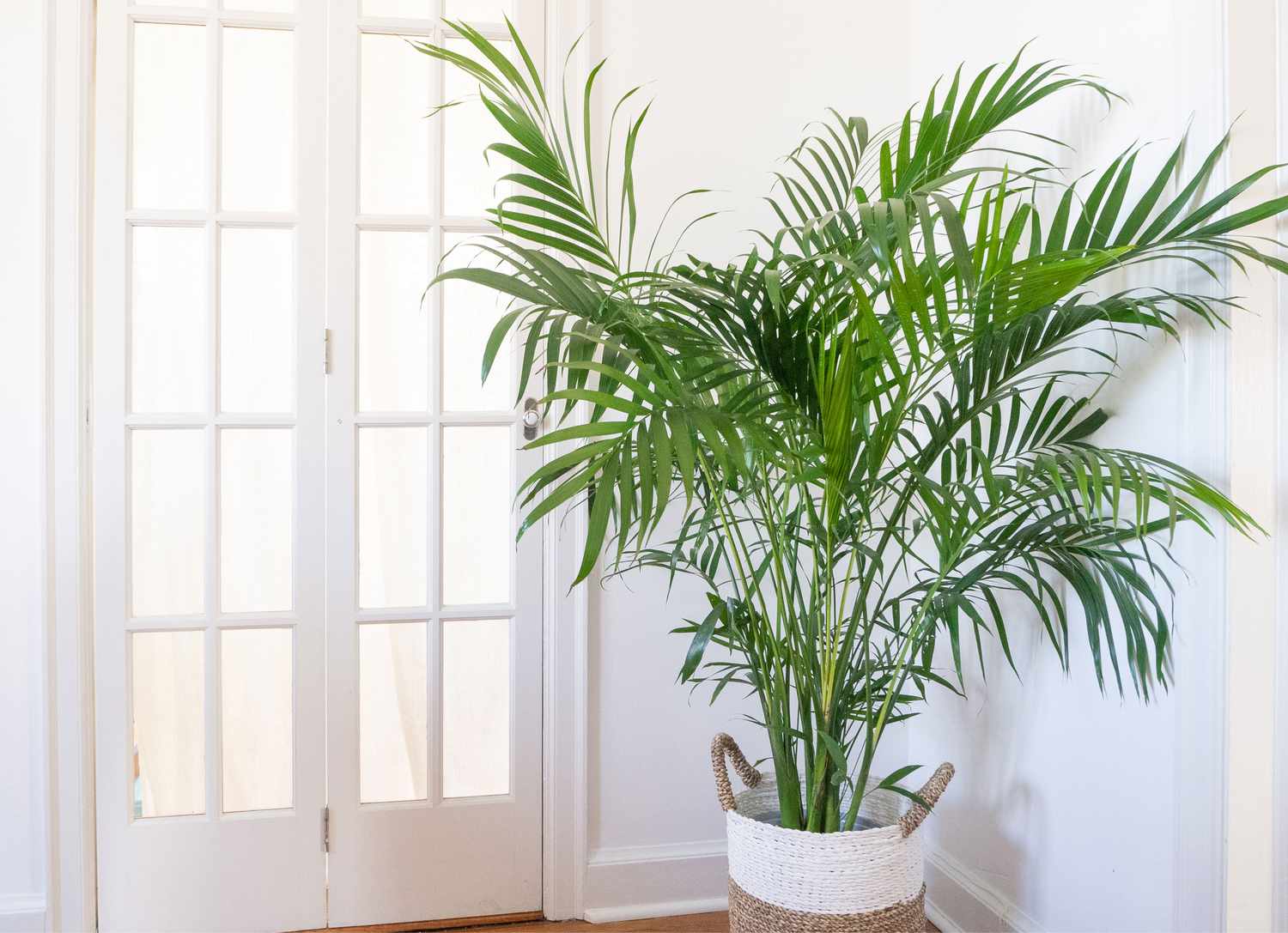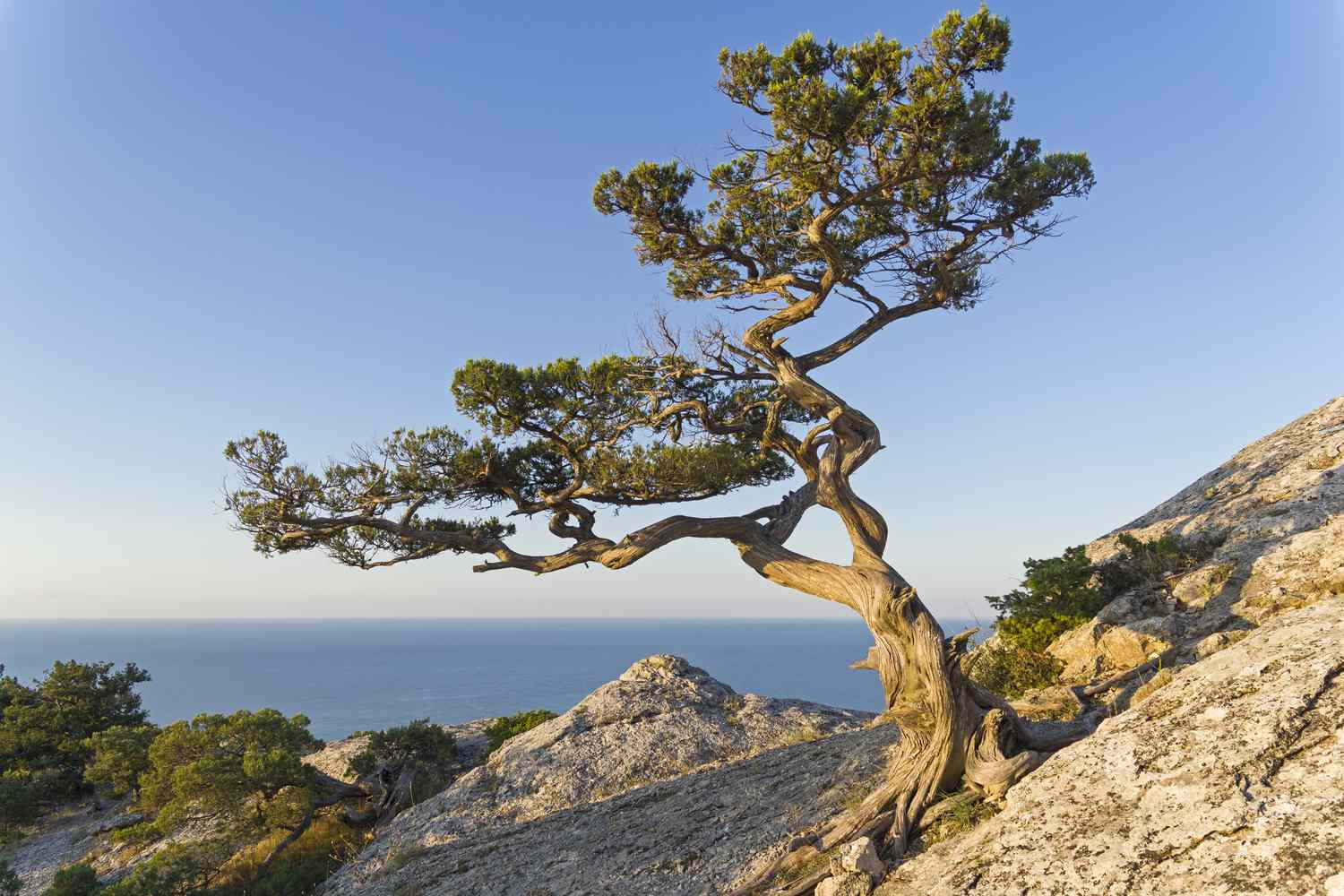Home>Gardening Techniques>Plant Care>How To Care For A Juniper Bonsai Tree Indoors


Plant Care
How To Care For A Juniper Bonsai Tree Indoors
Modified: February 9, 2024
Learn the essential steps of indoor plant care for a Juniper Bonsai Tree. Discover the secrets to keeping your bonsai thriving and healthy with our expert tips.
(Many of the links in this article redirect to a specific reviewed product. Your purchase of these products through affiliate links helps to generate commission for Chicagolandgardening.com, at no extra cost. Learn more)
Table of Contents
Introduction
Having a juniper bonsai tree indoors can add a touch of natural elegance to any living space. These miniature trees, with their delicate foliage and graceful shapes, are not only visually appealing but also provide a sense of tranquility and serenity. However, caring for a juniper bonsai tree indoors requires some knowledge and attention to detail. In this article, we will guide you through the essential steps to ensure that your juniper bonsai tree thrives and flourishes in its indoor environment.
Juniper bonsai trees, scientifically known as Juniperus, are a popular choice among bonsai enthusiasts due to their hardiness and adaptability. They are native to regions with a cooler and drier climate, such as North America, Europe, and Asia. These trees are known for their needle-like leaves, which can vary in color from green to blue-green and even silver. The shape and size of a juniper bonsai tree can be manipulated through pruning and shaping techniques, giving it a unique and artistic character.
Caring for a juniper bonsai tree requires attention to several key factors, including adequate lighting, proper temperature, regular watering, fertilization, pruning, and repotting. Additionally, it is crucial to prevent and treat any pest or disease issues that may arise. By following these guidelines, you can ensure that your juniper bonsai tree remains healthy and beautiful for years to come.
Choosing the Right Juniper Bonsai Tree
When selecting a juniper bonsai tree for indoor cultivation, it is essential to choose a healthy and suitable specimen. The following factors should be considered to ensure you make the right choice:
1. Species: There are several species of juniper bonsai trees available, each with its own unique characteristics. Some popular species include Juniperus Procumbens, Juniperus Squamata, and Juniperus Chinensis. Research each species and consider factors such as their growth habits, foliage color, and overall aesthetic appeal before making a decision.
2. Size and Age: Juniper bonsai trees come in various sizes and ages. Larger and older trees tend to have more developed and intricate branches, making them ideal for those seeking a mature and visually striking bonsai. However, smaller and younger trees allow for more flexibility in shaping and training.
3. Trunk Thickness: The thickness of the trunk is an important consideration in bonsai aesthetics. A thicker trunk indicates a more mature tree and can add a sense of visual balance and stability to the overall composition. Look for a trunk that is proportionate to the desired size and style of your bonsai.
4. Health and Condition: Ensure that the juniper bonsai tree you select is healthy and disease-free. Examine the foliage for any signs of discoloration, browning, or pest infestation. Avoid trees with wilted or drooping foliage, as this may indicate poor care or root issues. Inspect the roots to ensure they are well-established and not root-bound.
5. Aesthetics: Finally, consider your personal taste and preference when choosing a juniper bonsai tree. Look for a tree that resonates with you and evokes a sense of beauty and harmony. Consider the overall shape and form of the tree, as well as the texture and color of the foliage.
By considering these factors when choosing a juniper bonsai tree, you can ensure that you select a specimen that aligns with your vision and has the potential to thrive in your indoor environment.
Providing Adequate Lighting
Light is a vital factor for the health and growth of your juniper bonsai tree. Proper lighting conditions will ensure that your tree can carry out photosynthesis effectively, which is crucial for the development of its foliage and overall well-being. Here are some guidelines for providing adequate lighting:
1. Natural Light: Juniper bonsai trees thrive in bright, indirect sunlight. Place your tree near a window with exposure to morning or evening sun. However, be careful not to expose it to intense direct sunlight during the hottest part of the day, as this can scorch the leaves. If your indoor space lacks sufficient natural light, you can supplement it with artificial lighting.
2. Artificial Lighting: To provide adequate lighting for your juniper bonsai tree, you can use fluorescent or LED grow lights. Position the lights about 6-12 inches above the tree, adjusting the height as the tree grows. Aim to provide 10-12 hours of light per day, maintaining a consistent lighting schedule.
3. Light Intensity: The intensity of the light your tree receives is crucial. A moderate to high light intensity is generally preferred for juniper bonsai trees. If the leaves start to turn pale or yellowish, it could indicate insufficient light. On the other hand, if the foliage becomes brown or scorched, it may indicate excessive light. Monitor the light levels and make adjustments accordingly.
4. Seasonal Variations: It is important to consider the seasonal changes in light intensity. In the summer, when the sun is stronger, your juniper bonsai tree may require more shade or protection from direct sunlight. Conversely, during the winter months, when daylight hours are shorter, your tree may benefit from additional artificial lighting to compensate for the reduced natural light.
Providing adequate lighting is essential for the health and vitality of your juniper bonsai tree. By finding the right balance between natural and artificial light, you can create an optimal environment for your tree to thrive and showcase its full beauty.
Maintaining Proper Temperature
The temperature plays a critical role in the growth and well-being of your juniper bonsai tree. These trees generally prefer cooler temperatures, simulating their natural habitat. Here are some guidelines to help you maintain the proper temperature for your juniper bonsai:
1. Optimal Temperature Range: Juniper bonsai trees thrive in temperatures ranging between 60°F (15°C) and 75°F (24°C), making them well-suited for indoor environments. It is important to avoid extreme temperature fluctuations, as this can stress the tree and negatively impact its health.
2. Seasonal Variations: Recognize that the temperature requirements of your juniper bonsai tree may vary depending on the season. During the spring and summer months, temperatures within the optimal range will generally be suitable. However, in the winter, when indoor heating or colder outdoor temperatures prevail, additional adjustments may be necessary.
3. Winter Protection: During the winter, when temperatures dip lower, extra precautions are needed to protect your juniper bonsai tree from freezing. Place it away from drafty windows or doors, as exposure to cold drafts can cause damage. Consider using a humidity tray or misting the foliage to provide some moisture and insulation.
4. Air Circulation: While maintaining the right temperature, it is important to ensure adequate air circulation around your juniper bonsai tree. Stagnant air can lead to humidity imbalances and the development of mold or fungal diseases. Positioning the tree in a well-ventilated area helps maintain a healthy environment.
5. Monitoring: Regularly monitor the temperature around your juniper bonsai tree using a thermometer. Avoid placing it near heat sources like heating vents, radiators, or fireplaces, as excessive heat can damage the tree or dry out the foliage.
Maintaining the proper temperature is crucial for the overall health and growth of your juniper bonsai tree. By providing a consistent and suitable environment, you can support its vitality and enjoy the beauty of a thriving bonsai tree in your indoor space.
Watering the Juniper Bonsai Tree
Proper watering is essential for the health and survival of your juniper bonsai tree. It is important to find the right balance of moisture to prevent both underwatering and overwatering. Follow these guidelines to ensure you are watering your bonsai tree effectively:
1. Watering Frequency: Juniper bonsai trees prefer a moderately moist but well-draining environment. Water your bonsai tree when the top layer of soil feels slightly dry to the touch. The frequency of watering will vary depending on factors such as temperature, humidity, and the size of your pot. As a general guideline, check the soil daily, especially during hot summer months, and adjust your watering routine accordingly.
2. Watering Technique: When watering your juniper bonsai tree, aim to thoroughly saturate the root ball. This can be achieved by pouring water evenly over the soil surface until it starts to drain out of the drainage holes at the bottom of the pot. Proper drainage is crucial to prevent waterlogging, which can lead to root rot and other issues.
3. Mist or Soak: In addition to regular watering, misting the foliage can help maintain proper humidity levels for your juniper bonsai tree. This is particularly beneficial during dry or winter months when indoor heating can cause the air to become dry. Alternatively, you can occasionally soak your bonsai tree by submerging the pot in a basin of water for a few minutes, allowing the roots to absorb water from the bottom up.
4. Observation and Adjustment: Monitor the response of your juniper bonsai tree to watering. Look for signs of overwatering, such as yellowing or wilting leaves, or signs of underwatering, like drooping foliage or dry soil. Adjust your watering routine accordingly to meet the specific needs of your tree.
5. Seasonal Considerations: Keep in mind that during the colder months, when growth slows down, your juniper bonsai tree will require less frequent watering. Conversely, during the warmer months, when growth is more active, you may need to water more frequently to compensate for increased evaporation.
Remember that each juniper bonsai tree is unique and has its own watering requirements. By observing and understanding the needs of your tree, you can ensure that it receives the right amount of water to thrive and maintain its health and beauty.
Fertilizing the Juniper Bonsai Tree
Fertilizing is a vital aspect of caring for your juniper bonsai tree. These miniature trees have specific nutrient requirements to support their growth and ensure their overall health. Here are some guidelines to help you fertilize your juniper bonsai tree effectively:
1. Choosing the Right Fertilizer: Selecting the appropriate fertilizer is crucial for the well-being of your juniper bonsai tree. Look for a balanced, slow-release bonsai fertilizer specifically formulated for coniferous trees. These fertilizers contain the essential macro and micronutrients needed for the optimal growth of your bonsai tree.
2. Timing: Juniper bonsai trees benefit from regular fertilization during the growing season, which typically coincides with spring and summer. Start fertilizing when new growth appears and continue every four to six weeks until early fall. Avoid fertilizing during the winter months when the tree is dormant.
3. Dilution and Application: Follow the instructions on the fertilizer package for the appropriate dilution ratio. Generally, you will dilute the fertilizer in water and apply it to the soil of your juniper bonsai tree. Ensure that the fertilizer is evenly distributed and that you avoid applying it directly to the foliage, as this can cause leaf burn.
4. Monitoring and Adjustments: Regularly monitor the health and growth of your juniper bonsai tree. Watch for signs of nutrient deficiencies, such as yellowing or stunted growth. If you notice any issues, adjust your fertilization routine accordingly. However, avoid overfertilizing, as this can lead to nutrient toxicity and damage the tree’s delicate root system.
5. Organic Alternatives: If you prefer an organic approach, you can use natural fertilizers such as fish emulsion or compost tea. These organic options can provide beneficial nutrients to your juniper bonsai tree while being gentle on the environment.
Remember that fertilizing is just one part of the overall care of your juniper bonsai tree. Providing proper watering, adequate lighting, and regular pruning are equally important in maintaining its health and promoting its growth. By following these guidelines, your juniper bonsai tree will receive the nutrients it needs to thrive and showcase its natural beauty.
Pruning and Shaping Techniques
Pruning and shaping are essential techniques in maintaining the aesthetic appeal and health of your juniper bonsai tree. Proper pruning helps to refine the tree’s shape, encourage branching, and maintain its compact size. Here are some techniques to guide you in pruning and shaping your juniper bonsai tree:
1. Branch Pruning: Regularly inspect your juniper bonsai tree for any dead, damaged, or crossing branches. Use sharp and clean bonsai pruning shears to carefully remove these unwanted branches. This process improves airflow, reduces the risk of disease, and enhances the overall structure of the tree.
2. Canopy Pruning: To maintain a dense and balanced canopy, selectively remove excessive growth. Focus on thinning out overcrowded areas and removing branches that detract from the tree’s desired shape. Maintain an open structure that allows light to reach the inner branches, promoting their growth and overall health.
3. Pinching Techniques: Pinching is done by hand and involves removing the soft tips of new growth. This technique encourages the development of more compact foliage pads and promotes ramification (the branching of smaller secondary branches). Pinching should be done during the active growing season when the shoots are still soft and pliable.
4. Wiring: Wiring is a technique used to shape and guide the branches of your juniper bonsai tree. Soft aluminum or copper wire is wrapped around the branches and gently bent to create the desired shape. Take care not to apply excessive pressure, as the branches of juniper bonsai trees are relatively delicate. Remove the wire before it cuts into the bark and leaves marks.
5. Styling: The styling process involves shaping your juniper bonsai tree to mimic a particular shape or style, such as informal upright, cascade, or slanting. While styling, consider the natural growth patterns and characteristics of your juniper bonsai tree. Take your time, and gradually shape the branches over multiple pruning sessions to avoid stressing the tree.
When pruning and shaping your juniper bonsai tree, remember to step back and observe the tree from different angles. This will help you assess its overall balance and achieve an aesthetically pleasing composition. Be patient and have a clear vision in mind as you work towards creating a beautiful and unique bonsai tree.
Repotting the Juniper Bonsai Tree
Repotting is an essential part of maintaining the health and vitality of your juniper bonsai tree. It allows for root maintenance, nutrient replenishment, and ensures that the tree has adequate space to grow. Here are some guidelines to help you successfully repot your juniper bonsai tree:
1. Timing: Repotting is typically done every two to three years during the early spring, just before new growth begins. This timing allows the tree to recover quickly and establish its roots before the growing season.
2. Assessing the Root System: Carefully remove the tree from its current pot and examine the roots. Look for signs of root bound, such as roots densely packed and circling around the root ball. If the root system is too congested, it’s necessary to repot the tree to prevent stunted growth and nutrient deficiencies.
3. Pruning the Roots: If the roots are tangled or excessive, use bonsai pruning shears to trim them back. Trim the long, thick roots, and carefully untangle any circling roots. This process encourages the growth of new feeder roots and promotes a healthy root system.
4. Choosing the Right Pot: Select a pot that is slightly larger than the current one, with proper drainage holes. Bonsai pots are typically shallow, allowing for better airflow and moisture control. Use a well-draining bonsai soil mix specifically designed for coniferous trees, as it provides optimal conditions for root growth.
5. Repotting Process: Place a layer of bonsai soil at the bottom of the new pot. Position the tree in the center, ensuring that it sits at the correct height. Fill in the remaining space with fresh soil, gently pressing it around the roots to eliminate air pockets. Water the tree thoroughly to settle the soil.
6. Aftercare: After repotting, place your juniper bonsai tree in a protected area with partial shade for a few weeks to allow it to recover. Avoid direct sunlight and excessive watering during this time. Gradually reintroduce the tree to its normal environment once you see signs of new growth.
Remember, repotting should not be done annually unless the tree’s health or growth is being significantly impacted. Regularly monitoring the root system and overall health of your juniper bonsai tree will help you determine the optimal time for repotting.
Preventing and Treating Pests and Diseases
Pests and diseases can pose a threat to the health and vitality of your juniper bonsai tree. However, with proper preventive measures and timely treatments, you can keep your bonsai tree protected and thriving. Here’s how to prevent and treat common pests and diseases:
1. Regular Inspection: Routinely inspect your juniper bonsai tree for any signs of pests or diseases. Look for unusual discoloration, spots, webbing, or visible pests on the foliage and branches. Early detection is critical for effective treatment.
2. Proper Hygiene: Maintain good bonsai hygiene by removing any fallen leaves, debris, or dead plant material from the soil surface. This helps prevent the buildup of pests and diseases and maintains a clean environment for your bonsai tree.
3. Pest Prevention: To prevent pests, such as aphids, spider mites, or scale insects, ensure good air circulation around your bonsai tree. Regularly mist the foliage to increase humidity and deter certain pests. Consider using insecticidal soap or organic neem oil sprays as preventive measures against common pests.
4. Disease Prevention: To prevent diseases, avoid overwatering the juniper bonsai tree, as excess moisture can lead to root rot or fungal infections. Maintain proper watering practices and ensure good drainage in the pot. If the foliage becomes discolored or develops spots, consider using a fungicidal spray to treat the affected areas.
5. Biological Control: Introducing beneficial insects, such as ladybugs or predatory mites, to your bonsai tree can help control pest populations naturally. These insects prey on common pests and can assist in maintaining a balanced ecosystem around your bonsai.
6. Severe Infestations and Diseases: In case of severe pest infestations or diseases, consult a professional bonsai specialist or horticulturist for appropriate treatment options. They can provide more targeted solutions, such as stronger insecticides or fungicides, and guide you on the best course of action to protect your juniper bonsai tree.
Remember, prevention is key when it comes to pests and diseases. Regularly monitor your juniper bonsai tree, maintain its health, and promptly address any issues to ensure that it remains vibrant and pest-free.
Conclusion
Caring for a juniper bonsai tree indoors can be a rewarding and fulfilling experience. By following the right techniques and providing proper care, you can maintain a healthy and beautiful bonsai tree that adds elegance and tranquility to your living space.
Choosing the right juniper bonsai tree, providing adequate lighting, maintaining proper temperature, watering correctly, fertilizing regularly, and practicing pruning and shaping techniques are all essential for the well-being of your bonsai tree.
Additionally, repotting the juniper bonsai tree when necessary and preventing and treating pests and diseases play vital roles in ensuring its longevity and vitality.
Remember, each juniper bonsai tree is unique, and its care may require slight adjustments based on environmental factors and individual needs. Taking the time to observe and understand your specific bonsai tree will allow you to provide the best care possible.
So, embark on this journey of nurturing a juniper bonsai tree, and enjoy the therapeutic benefits it brings. With proper care and diligence, you can create a captivating miniature world in your own home, bringing nature’s beauty and serenity into your everyday life.






